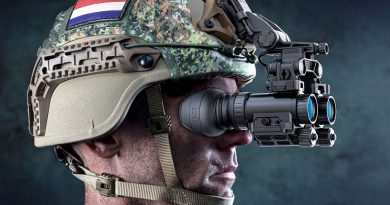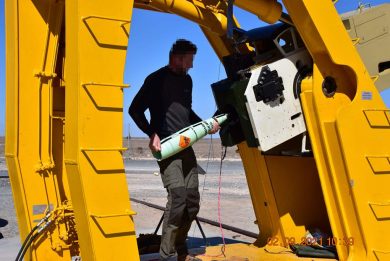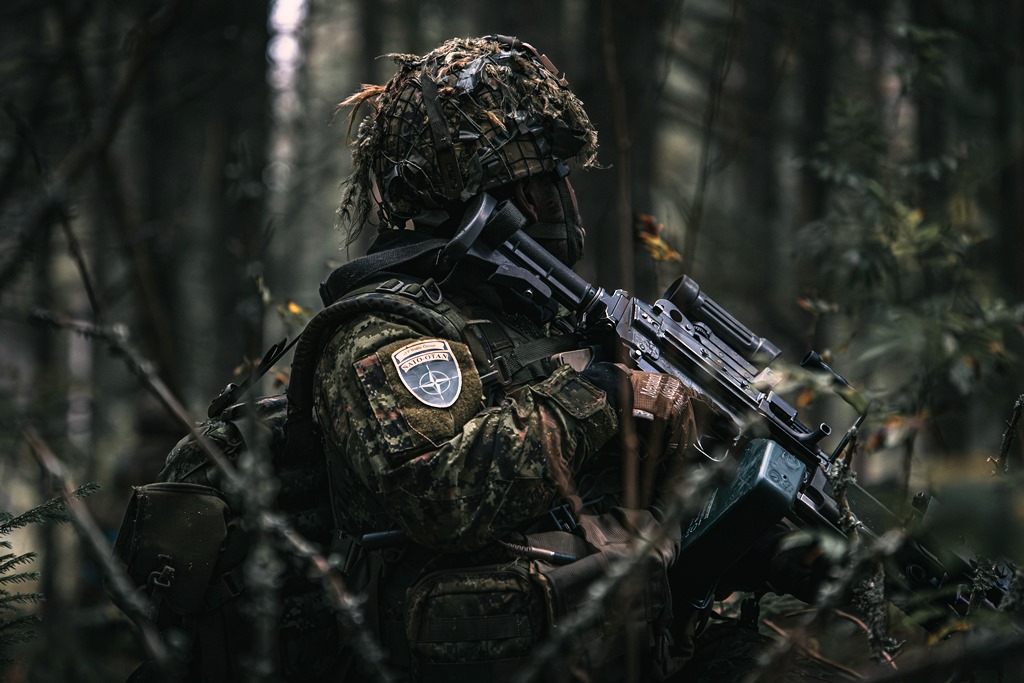
IAV 2024 – Estonia aims at increasing its Land Forces
A member of the European Union and NATO since 2004, Estonia shares nearly 300 km of border with Russia and its forces are reinforced by a NATO battlegroup based on a United Kingdom framework, which includes also forces from France and Iceland. To improve the nation’s defence the Tallin government is looking at increasing the number and capacities of its Land Forces
With a population short of 1.4 million inhabitants, the Estonian defence responsible consider that to properly protect the country a 60,000 people strong land force would be needed. The current Army includes around 4,000 regulars, 3,500 conscripts, and a Reserve and Territorial Army that allow bringing the total to 43,000 uniformed individuals in case of crisis. Adding to the national component, NATO provides the aforementioned eFP (enhanced Forward Presence), the grand total being considered sufficient to ensure the defence of the border. At the International Armoured Vehicles Conference organised by Defence iQ, which took place at Twickenham, London, 22-25 January, the Estonian Defence Forces depicted the build-up of their land forces, underlining the armoured component, as well as their future.
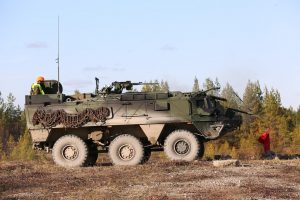
Back to independence in August 1991, the country immediately started forming the national armed forces, the first armoured units being equipped with a small number of vintage BTR-80s of eastern origin. These were mostly used as a “battle taxi” due to their limited reliability, protection, and firepower. It was only in 2005 that Estonia’s defence budget allowed buying new wheeled armoured personnel carriers (APCs) from Finland, in the form of Patria PASI X-180 6×6. These were assigned to the high readiness unit, the Scouts Battalion based in Tapa, allowing it to react quickly to a threat, allowing other battalions to mobilise. Vehicles of the same category were acquired in 2010 for equipping a second battalion; these were also Finnish vehicles but were bought from the Netherlands. These PASI XA-188 being better protected and having better performances than the previous 6×6 APCs, they replaced the latter in the high readiness battalion replaced, older APCs being provided to a unit mostly manned by reservists.
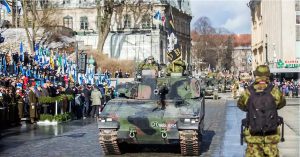
The Netherlands was once again providing vehicles to Estonia some years later; due to the financial crisis the decision was taken to sell the equipment of one mechanised battalion. Forty-four CV9035 tracked infantry fighting vehicles (IFVs) were therefore acquired in 2014 by Tallin at a unitary price of around 2.8 million Euro, which increased to 3.2 million considering the add-on armour kit adopted to further improve protection. These vehicles, developed and manufactured by BAE Systems Hägglunds, became the working horse of the high readiness battalion, which in turn gave its wheeled vehicles to another reserve battalion. This considerably increased the strength and effectiveness of the Estonian land defence component, as it was now fielding three mobile battalions, one on track and two on wheels. The first Armoured Infantry company on CV90s became operational in 2017-18, followed at one-year intervals by the two other companies, finally forming the battalion. Crews and maintainers followed courses in the Netherlands, while tactical courses were mostly provided in Finland, the battalion becoming fully operational in 2020.
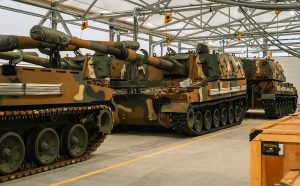
In that same year the Estonian Army received its first K9 155/52 mm self-propelled howitzers that were acquired in 2017 with the aim of providing the two Infantry Brigades, the 1st headquartered in Tapa and the 2nd in Luunja, respectively west and south-west of Tallin, towards the two potential axis of attack, with adequate indirect fire support. The K9 was developed and manufactured by Hanwha in South Korea, and the acquisition of the first 24 systems was followed by a further order of 12 howitzers in 2023 to bring each artillery battalion to 18 howitzers, following the importance acquired by artillery in the Russian-Ukraine conflict.
While the 1st Brigade was becoming a unit equipped with capable vehicles, it was clear that the 2nd Brigade infantry elements lacked the required mobility. This led Estonia to order in 2023 130 Otokar
Arma 6×6 wheeled APCs and 100 Nurol Makina NMS4x4 light armoured vehicles, the first ones of those Turkish-made platforms to be delivered in early 2025.
In the meantime, lessons learned and lessons identified by other armies in operational deployments in different situations are analysed, Estonia already forming its officers as tank units’ commanders even if, for the time being, no main battle tank is available. Developing such mindset is also made easier by the presence of the eFP, which usually deploys at least one tank squadron. At the same time wheeled APCs are used as IFVs to develop the skills, looking forward when such fighting vehicles will be provided also to the second brigade, Estonia trying to find the best practices from other nations, to anticipate what its forces might become in the near future.
In 2016 Norway and Estonia signed a deal, Oslo providing 35 CV90 Mk1 chassis to Tallin, the Estonian Army aiming at using them as combat support and combat service support platforms. At IAV 2024 it was stated that their rebuilding is currently underway in Estonia by local companies, and the outcome will see nine different configurations being produced, in variable numbers. These are Command and Control (C2), Indirect Fire Coordination Centre, Armoured Personnel Carrier, Mortar Carrier, Antitank, Air Defence, Engineer, MEDEVAC and Combat Supply. First vehicles should be delivered in early 2025. Most of them will go to the CV90 battalion, considerably increasing its numbers.
Acquiring vehicles is not sufficient, as these requires adequate facilities to be stored and maintained, hence the Estonian Army invested considerably in the last 10 years in that field, not only for national forces but also for the eFP battlegroup. Training is another key issue, so Estonia invested in the upgrade of the main training area close to the 1st Brigade in Tapa to adapt it to the needs of the CV90s. The central training area was reconstructed, a range for armoured vehicles was established as well as other specialised training areas, the range now having 100 km of roads at the cost of 1,500 hectares deforestation.
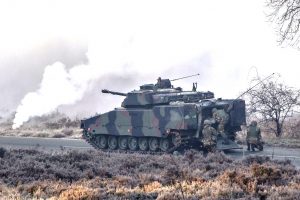
While Estonia considers the CV90 programme a success, not all went smooth mostly due to the lack of experience of a young armed force. CV90 running costs, ammunition, spares, and life cycle, proved to be underestimated. The same was true for the time needed for rebuilding training areas, as well as for time needed to convert existing chassis into new versions, the latter problem mostly due to the complexity of cooperation with industry.
That said, the Estonians are fully satisfied of the CV90 choice, especially under the training and operations aspects. At a recent competition organised in 2023 by the Netherlands Army for all CV90 users, at crew level the Estonians won the first prize, and got to the second place in the platoon event. “Steel beasts” computer-based simulation is used up to battalion level to cope with the lack of room for training at battalion echelon in training areas, while Estonia obtained some slots at the Netherlands Army Tactical Indoor Simulation System, TacTIS in short. However, what is really considered a key system for training is the Saab combat laser simulation system used in force-on-force exercises providing simulation as realistic as possible. “Better one IFV less but with the laser training system,” according to Estonia. Field training often included other nations tanks, such as Danish Leopard 2s, cooperation between Estonian CV90s and those MBTs having worked smoothly. The aforementioned limitations in terms of training areas were partly solved by the clearance to train on civilian terrain at least once a year, in what is known as Spring Storm exercise, which in 2023 brought some 14,000 Estonian and Allied troops to villages, fields and beaches of Estonia, with one Brigade minus against a same level unit in a force-on-force operation.
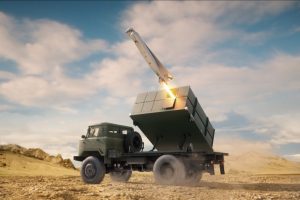
When in the year 2004 Estonia acquired its first APC battalion, the defence budget was around 150 million Euro; since then the budget has increased to over 1.3 billion Euro in 2024. EDR On-Line understood that divisional assets are being implemented; among these HIMARS long range artillery systems as well as loitering munitions will be acquired alongside antiship missile batteries. Should the defence budget increase further, from the current 3.2% of Gross Domestic Product to 5%, a third brigade will be formed as well as possibly a tank battalion. It is quite probable that two MBT/CV90 units will be formed with equal manoeuvre capabilities, although no firm decisions were taken yet.
For the time being the development plan up to 2031 sees the completion of the 1st Brigade assets, with Brigade C2, Artillery C2, ISR C2 and equipment for the antitank company. As for the 2nd Brigade the acquisition of new vehicles was already mentioned, and here too C2 assets and new weapons for the antitank company are needed.
Photos courtesy Estonian Defence Forces and IAI


